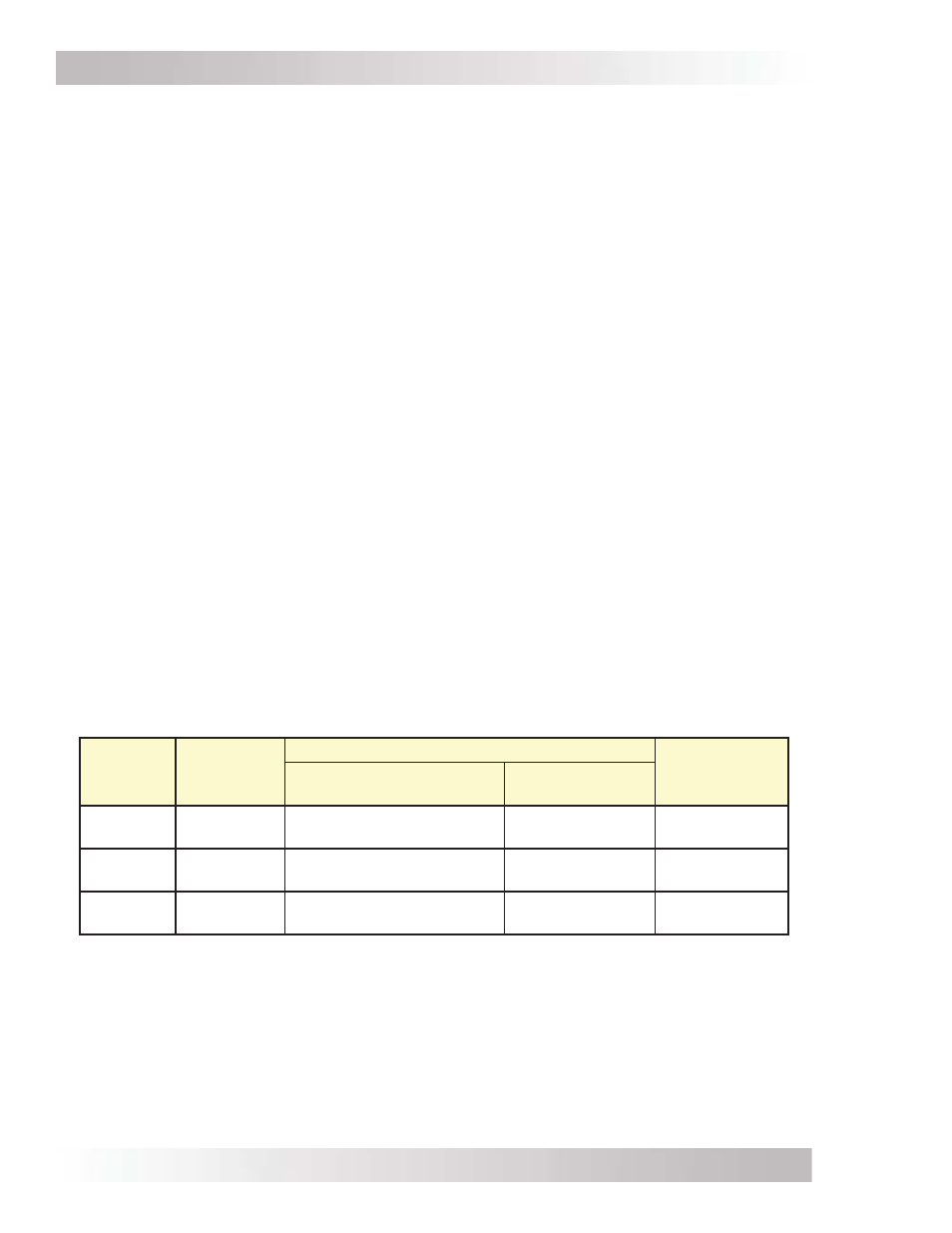1 dc wire sizing, 2 dc overcurrent protection, Installation – Magnum Energy ME Series User Manual
Page 24

©
2012 Magnum Energy, Inc
Page 16
Installation
2.4.1
DC Wire Sizing
It is important to use the correct DC wire to achieve maximum effi ciency from the system and
reduce fi re hazards associated with overheating. Always keep your wire runs as short as practical
to help prevent low voltage shutdowns and keep the DC breaker from nuisance tripping (or open
fuses) because of increased current draw. See Table 2-1 to select the required minimum DC wire
size (and corresponding overcurrent device) based on your inverter model. The cable sizes listed
in Table 2-1 for your inverter model are required to reduce stress on the inverter, minimize voltage
drops, increase system effi ciency, and ensure the inverter’s ability to surge heavy loads.
If the distance from the inverter to the battery bank is greater than 5 feet (1.5m), the DC wire
size will need to be increased. Longer distances cause an increase in resistance, which affects the
performance of the inverter. Continue to use the overcurrent device previously determined from
Table 2-1, and then refer to Table 2-2 to determine the minimum DC wire size needed for various
distances based on your inverter model.
2.4.2
DC Overcurrent Protection
DC overcurrent protection is not included in the inverter and must be provided as part of the
installation. This requirement is needed in order to comply with electrical code regulations and
for safety reasons. The DC overcurrent protection device must be installed in the positive DC
cable line, it can be a fuse or a circuit breaker, and it must be DC rated. It must be correctly sized
according to the size of DC cables being used, which means it is required to open before the cable
reaches its maximum current carrying capability, thereby preventing a fi re. The NEC requires both
overcurrent protection and a disconnect switch. If a circuit breaker is used as the overcurrent
protection device, it can also be used as the required DC disconnect.
If a fuse is used as an overcurrent device, a Class-T type or equivalent is recommended. This fuse
type is rated for DC operation, can handle the high short-circuit currents, and has a time delay
that allows for momentary current surges from the inverter without opening the fuse. However,
because the fuse can be energized from both directions, if it is accessible to unqualifi ed persons
the NEC requires that it be installed in such a manner that the power must be disconnected on
both ends of the fuse before servicing.
Use Table 2-1 to select the DC overcurrent device needed based on the recommended minimum
wire size for your particular inverter model (may not meet all local code or NEC requirements).
Table 2-1, Recommended DC Wire/Overcurrent Device for Rated Use
Inverter
Model
Maximum
Continuous
Current
1
In Free Air
DC Grounding
Electrode
Wire Size
4
Minimum DC Wire
Size (rating)
2
Maximum DC
Fuse Size
3
ME2000/
ME2012
267 amps
#2/0 AWG (67.4 mm
2
)
300 amps
300 amps with
time delay
#6 AWG
(13.3 mm
2
)
ME2512
333 amps
#4/0 AWG (107.16 mm
2
)
400 amps
400 amps with
time delay
#6 AWG
(13.3 mm
2
)
ME3112
413 amps
#4/0 AWG (107.16 mm
2
)
400 amps
400 amps with
time delay
5
#6 AWG
(13.3 mm
2
)
Note
1
– Maximum continuous current is based on the inverter’s continuous power rating at the lowest input
voltage with an inverter ineffi ciency factored in.
Note
2
– Copper wire rated with 90°C (194°F) insulation at an ambient temperature of 30°C (86°F), with a
multiple cable fi ll factor (0.8) de-rating (if needed).
Note
3
– The next larger standard size overcurrent device may be used if the de-rated cable ampacity falls
between the standard overcurrent devices found in the NEC.
Note
4
– Per the NEC, the DC grounding electrode conductor can be a #6 AWG (33.6 mm
2
) conductor if
that is the only connection to the grounding electrode and that grounding electrode is a rod, pipe, or plate
electrode.
Note
5
– May not allow continuous operation at full rated power as defi ned by the NEC.
